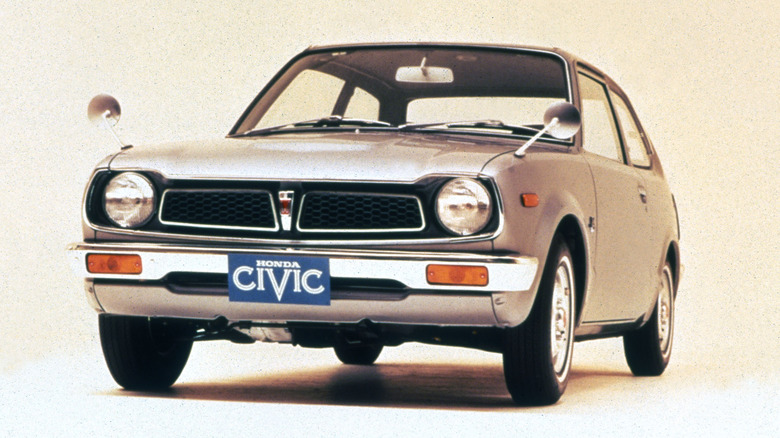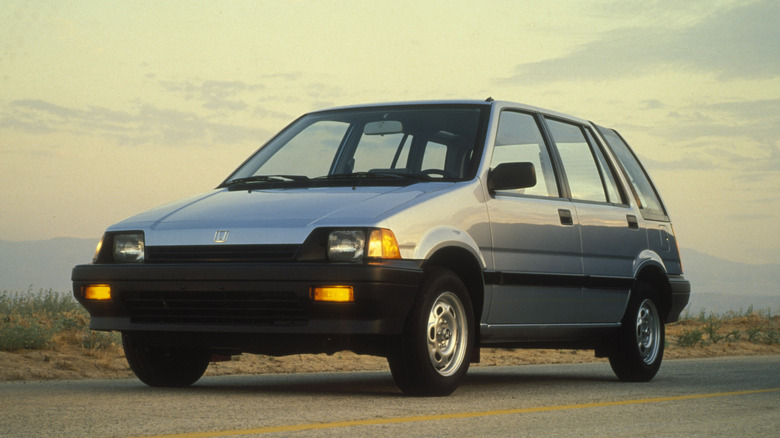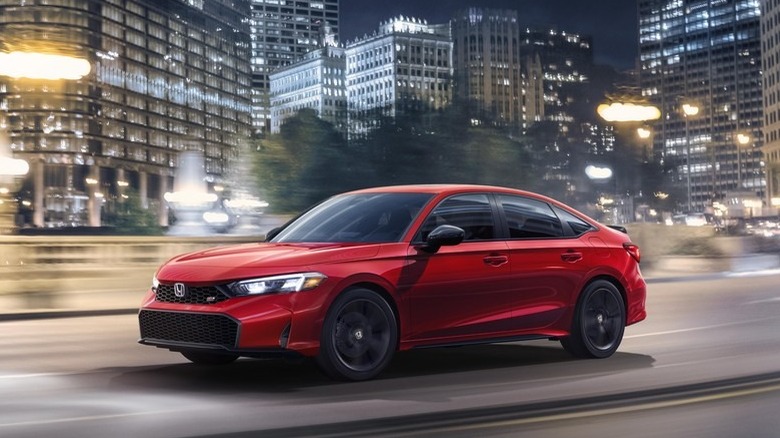How Did Honda Land On The Name 'Civic' And What Does It Mean?
The Honda Civic is one of the longest standing names in the automotive world and Honda's longest-running automobile. For over 50 years, it has provided relatively inexpensive transportation, efficient powertrains, and from time to time, it sets lap records around some of the world's most infamous racetracks like the Nürburgring. The Civic offers all sorts of appeal to enthusiast drivers as well as frugal shoppers looking for a reliable and affordable car. But what got us here? How did the Civic get its name?
If you look far enough back in the Civic's history, you'll see "CVCC" emblems in the grille — which sounds a bit like the word Civic, and you might think that's where the name came from, but you'd be wrong. CVCC stands for Compound Vortex Controlled Combustion — the engine that debuted with the first Civic, offering a clean-running powertrain that had no need for a catalytic convertor. But the name Civic, it comes from Honda's plan to create a car "for citizens and cities" – moving through traffic and keeping up with the fast paced life of big cities around the globe. It's a name that comes paired with a mission statement. And for most of Honda's history, it's lived up to the name.
Civic presence grew over the years
Back in the 1970s, Honda started development on a then-unnamed model with the intent of producing a "world-class car that [was] light, quick and compact." That concept would grow up to become the Civic eventually. The first Civic was introduced to the United States in 1973 with pretty scant dimensions. It was just 139.8 inches from nose to tail, weighing in at 1,536 pounds. It was powered by a SOHC four-cylinder engine that produced 50 hp and took it from zero to 60 mph in 12.9 seconds. Not a rocketship, but respectable by the standards of the day. The Civic's CVCC engine also held the distinction of being the first engine to comply with the standard set by the 1975 Clean Air Act without using a catalytic converter.
By comparison, today's base Civic Sport is 184.4 inches long – 44.6 inches (3.7 feet) longer than the first. To be fair, the original Civic was a two-door hatchback and today's Civic has four doors, but it's still a considerable difference. The 2025 Civic also has a curb weight of 2,877 pounds, almost double that of the 1973 model. Power is up considerably too, with the base 2025 Civic bringing 150 horses to the party — three times what the original model offered. The current Civic's dimensions however, are just about right amongst the current competitive set. It's grown quite a bit, but the Civic is still compact enough to feel right at home on tight city streets.
Living up to its name
While the current Civic is relatively large compared to the models from the 1970s, it still offers right-sized transportation for city dwellers. The four-door sedan offers plenty of front and rear legroom, with an impressive trunk and the Civic hatchback is even more practical. Small exterior dimensions though, mean it's easy to park. All of this practicality, combined with the versatility of multiple trim levels and configurations means that the Civic still maintains mass-market appeal.
In the five decades since the original Civic debuted, there have been some excellent generations and some that were less inspiring. For the most part though, the Civic has maintained its reputation as an impressive city vehicle. Most generations of the Civic have offered impressive cargo space, fuel efficient engines (some non-hybrid models even broke 50 mpg over the years), and class-leading refinement. Giving Honda's original compact hatchback the name "Civic" it would seem, has kept it honest — and kept it on the list of Honda's best-selling models for a long time.


